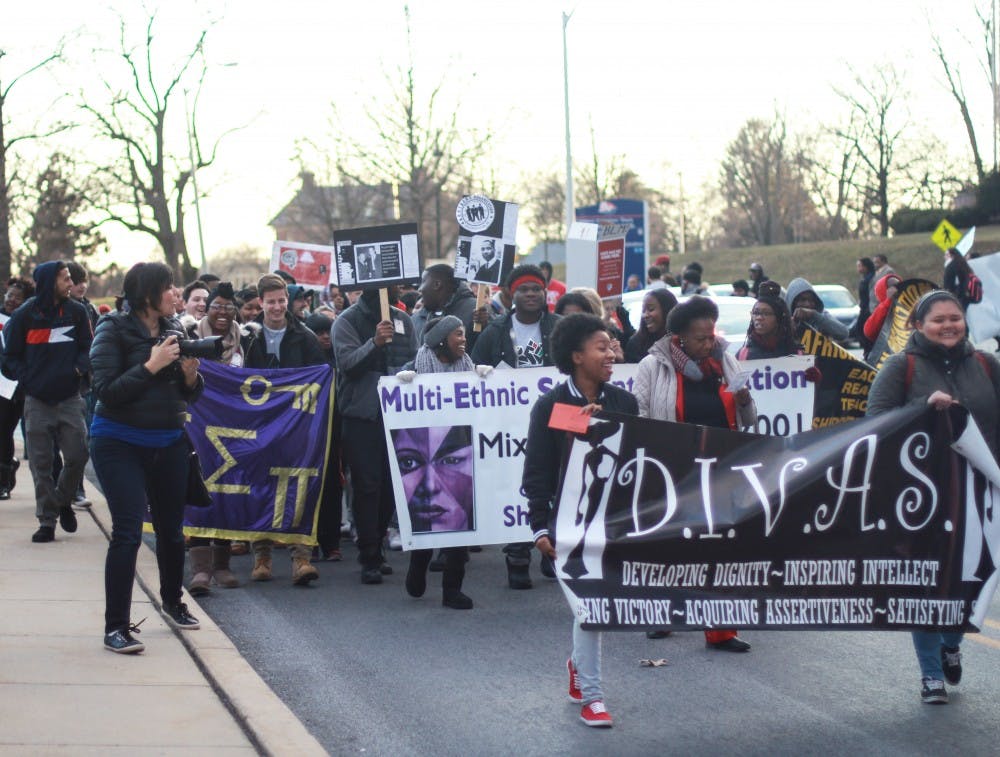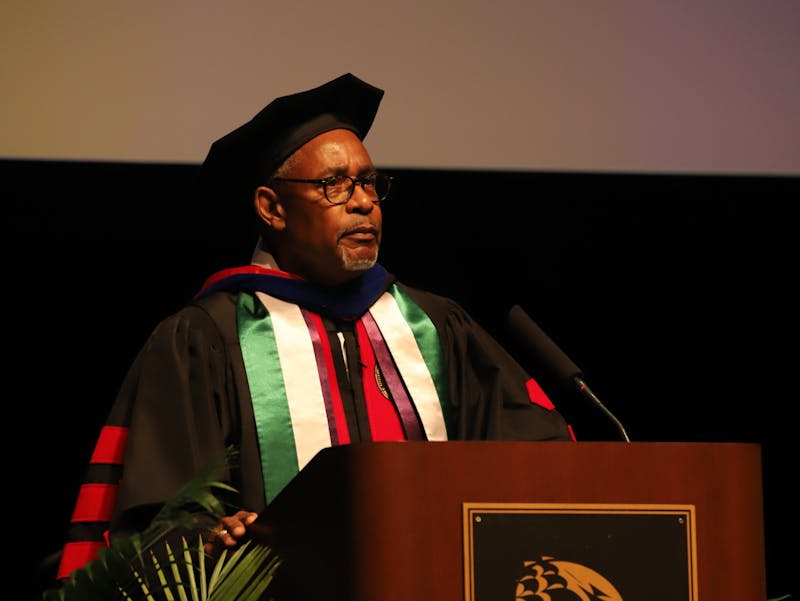Marches are a popular way for Americans across the country to exercise their First Amendment rights, and at Shippensburg University it is no different.
The annual March for Humanity kicked off last week, and this week the SU community is having its Women’s March. They come after the Jan. 21 Women’s March gathered hundreds of thousands of people in Washington, D.C., and around the world. But what is the point of a march, and do they change anything?
Dozens, hundreds or sometimes thousands of people descend at a single location with signs and banners to chant about their concerns. They come in the wake of alleged police brutality, court orders, political campaigns and elections, new legislation, presidential decrees and for a number of social issues.
Marches can rarely change anything on a substantial level. Protests and riots cannot undo election results or new laws. On the contrary, marches are a liability to a cause or movement. A few rioters can easily paint the whole group as unruly and effectively undermine whatever the main goal is.
Yet there is something about a large number of people coming together for the same reason that is alluring, even if they cannot get anything concrete to change.
One of the United States’ most famous marches was the Oct. 21, 1967 Pentagon Riot. Whether it was a civil protest or a violent riot depends on who was watching. But what was significant about this march was that a lot of people turned their attention toward it.
The U.S. Marshals’ website says about 50,000 people gathered around the Lincoln Memorial to protest the Vietnam War. While some accounts put the total number at 100,000 people, the horde inevitably marched across the Potomac River to the Pentagon. Faced against U.S. troops and marshals there were small skirmishes.
Despite injuries and arrests the war did not end that day or the next day. But did anyone really expect it to? Probably not. What it did do was inspire people across the nation. It told people that other anti-war Americans were out there and willing to take action. It also sent a message to the government that thousands of people had the ability to organize and speak out.
Maybe a march is not about accomplishing anything concrete, at least not right away. It is about a bigger picture that involves getting people’s attention, exciting them and joining a movement. A single protest may just be a link in a long chain that eventually reaches a goal.
When the Association of Pennsylvania State College and University Faculties rallied at the Dixon University Center in Harrisburg last fall, it did not prevent a strike. What the faculty did do was show their strength in numbers and a determination to strike.
But a group of people yelling and waving signs does more than send a message to others. It strengthens the group from within. The unity that is inherently necessary for a rally or march to succeed is something that feeds off of itself. People can let out their frustrations, but also inspire each other to do more for their cause.
When students march for humanity, or for women or anything else, it may not change the world around them but it will change the world within them. Maybe the U.S. or even Pennsylvania won’t become a better place because a hundred or so people marched around campus, but SU will be a better place and that is a goal worth accomplishing.




The Slate welcomes thoughtful discussion on all of our stories, but please keep comments civil and on-topic. Read our full guidelines here.